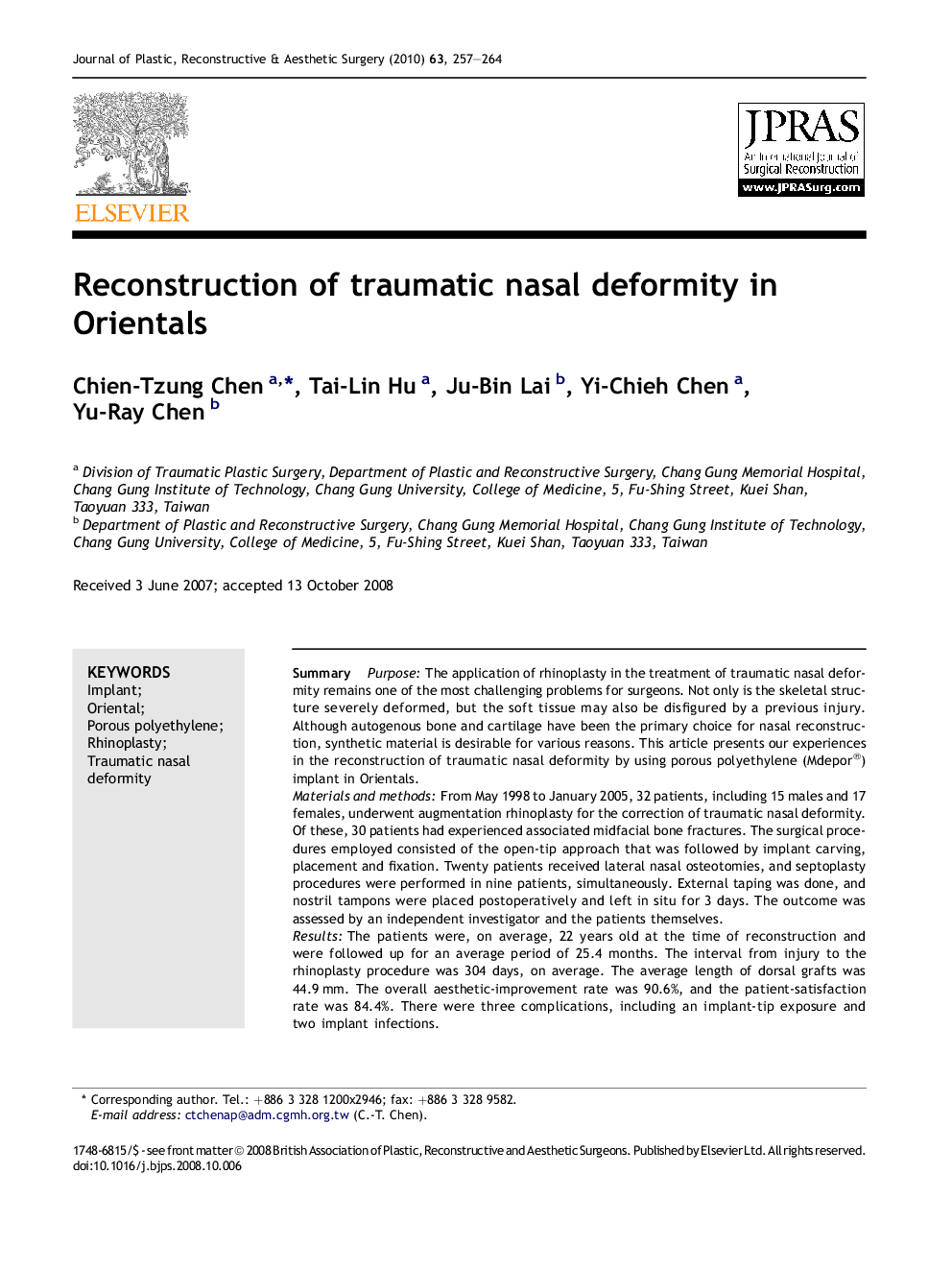| Article ID | Journal | Published Year | Pages | File Type |
|---|---|---|---|---|
| 4120169 | Journal of Plastic, Reconstructive & Aesthetic Surgery | 2010 | 8 Pages |
SummaryPurposeThe application of rhinoplasty in the treatment of traumatic nasal deformity remains one of the most challenging problems for surgeons. Not only is the skeletal structure severely deformed, but the soft tissue may also be disfigured by a previous injury. Although autogenous bone and cartilage have been the primary choice for nasal reconstruction, synthetic material is desirable for various reasons. This article presents our experiences in the reconstruction of traumatic nasal deformity by using porous polyethylene (Mdepor®) implant in Orientals.Materials and methodsFrom May 1998 to January 2005, 32 patients, including 15 males and 17 females, underwent augmentation rhinoplasty for the correction of traumatic nasal deformity. Of these, 30 patients had experienced associated midfacial bone fractures. The surgical procedures employed consisted of the open-tip approach that was followed by implant carving, placement and fixation. Twenty patients received lateral nasal osteotomies, and septoplasty procedures were performed in nine patients, simultaneously. External taping was done, and nostril tampons were placed postoperatively and left in situ for 3 days. The outcome was assessed by an independent investigator and the patients themselves.ResultsThe patients were, on average, 22 years old at the time of reconstruction and were followed up for an average period of 25.4 months. The interval from injury to the rhinoplasty procedure was 304 days, on average. The average length of dorsal grafts was 44.9 mm. The overall aesthetic-improvement rate was 90.6%, and the patient-satisfaction rate was 84.4%. There were three complications, including an implant-tip exposure and two implant infections.ConclusionA porous polyethylene (Medpor®) implant is an effective alternative to autograft for correction of traumatic nasal deformity in Orientals to achieve a pleasing appearance of the nose without donor-site morbidity. A meticulous execution of concomitant procedures and impregnation of the implant by submerging it in an antibiotics solution prior to use were helpful in decreasing the complications.
